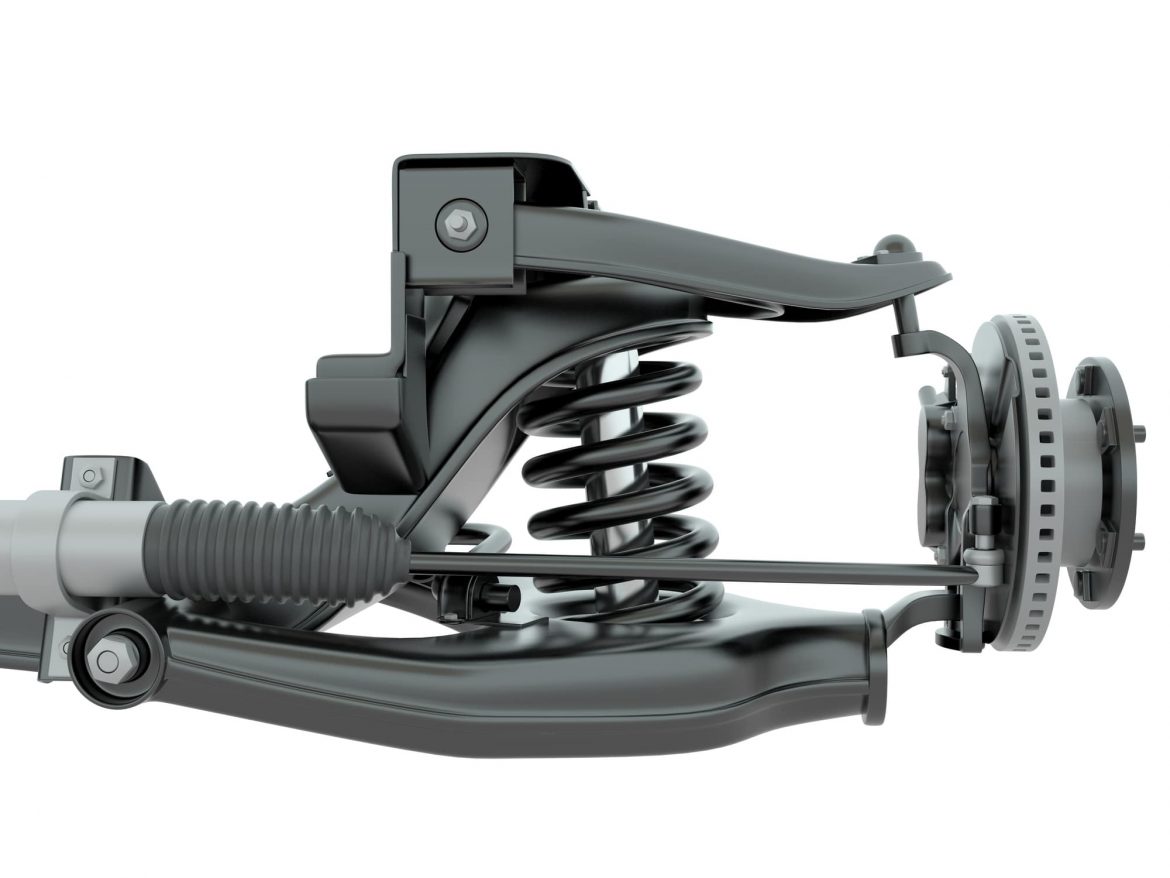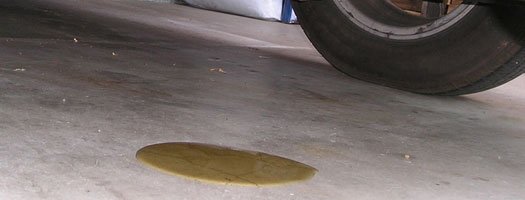It’s often been said, and we’ll repeat it here and now: the single most important maintenance an owner can perform on their vehicle is to change the oil at recommended intervals and fix the problem if the oil is leaking. The lubrication that oil provides to the engine’s moving parts is critical to their proper function and their ability to withstand the punishing heat and pounding they take every time the engine is started.
There are four main reasons your car or truck might start leaking oil:
- Worn or corroded rings or valve seals
- Improperly installed gaskets
- Incorrect oil filter attachment
- Damage to oil pan
What Motor Oil Does
Motor oil performs several functions that keep the engine running smoothly and with maximum efficiency. Here is a little about each function:
- Motor oil lubricates moving parts. The viscous fluid we call motor oil forms a chemical and physical barrier between hot, moving metal parts, like the pistons and the cylinders that house them. The pistons move at speeds up to 45 miles per hour, or hundreds of time a minute, to propel the vehicle. To prevent wear and tear on either the pistons or the cylinders, the oil barrier prevents them from actually touching.
- Motor oil cleans surfaces: Modern motor oil is a chemical marvel. It is enriched with detergents and other additives that clean out impurities that can interfere with proper function and prevent corrosion in the cylinder walls and piston rings. Other additives help the oil maintain its viscosity, or thickness, and flow sufficiently in the very hot conditions normally found in running engines.
- Motor oil helps cool the engine: Cooling is the primary function of coolant, not motor oil, but oil does have heat-absorbing properties. Because it flows around the combustion chamber, and because motor oil reduces friction between moving parts, it is useful in supporting the work of coolant in preventing engines from overheating. (It is important to note that car oil alone will not prevent an engine from overheating, so make sure the coolant level is at proper levels and the radiator is flushed out at intervals recommended in the owner’s manual.)
- Motor oil ensures good cylinder compression: In an internal combustion engine, an air-fuel mixture is ignited at the bottom of the cylinder, causing an explosion that drives the piston up, ultimately turning the wheels of the vehicle. That explosion works optimally in a closed chamber without any microscopic holes or leaks for air to flow out. Motor oil helps seal those miniscule leaks and maintain the necessary compression in the cylinder.
Essentially, motor oil in a car or truck engine is the rough equivalent of blood in a human body. And like blood, it is a bad sign when oil begins leaking.
There are four main causes of an oil leak in an automobile.
Bad Rings or Valve Seals Can Cause an Oil Leak
Rings and valve seals have one function—to seal the chambers they are designed to protect. When they wear or corrode, oil can leak or splash out of the chamber, causing the two-fold problem of lost oil where it is needed and the presence of oil in the combustion chamber, where it can interfere with the combustion process. Oil lost this way generally won’t drip on the ground or saturate the visible parts of the engine, so it will be difficult to detect unless enough of it gets into the combustion chamber to get burned up and emitted through the exhaust system. Blue smoke from the tailpipe is a telltale sign of oil leaking from a ring or valve seal.
Some seals are easier to diagnose and access than others. If the seal is deep in the recesses of the engine, replacing that $5.00 seal could require half the engine be removed. If the leak can be traced directly to a seal that is easy to access, replacing it makes for a simple and cost-effective repair.
Bad Installation of Gaskets Can Cause an Oil Leak
Gaskets serve as bodyguards for various parts of the engine. If a gasket is tightened beyond manufacturer’s specifications it can crack or slip, allowing oil to leak past. Gaskets can also suffer damage from debris kicked up from the road, allowing motor oil to leak through holes.
As with seals, some gaskets are easy to diagnose and access, and others are not.
Improper Oil Filter Attachment
During an oil change, the new oil filter may be affixed incorrectly, either unevenly or with insufficient tightness. This will allow oil to seep out between the filter head and the engine. Sometimes the gasket from the old filter sticks to the vehicle and prevents the new filter and gasket from forming a tight seal. Oil flows through the oil filter before entering the engine, so a leak there can create a serious problem. A leak at the filter is easy to see because it drips onto visible engine parts and onto the ground. It is also straightforward to correct. As long as the oil is drained first, the filter should be easy to remove with a filter wrench and some hand loosening.
Damage to the Oil Pan Can Cause an Oil Leak
The oil pan hangs below most of the engine’s parts, making it vulnerable to damage from road hazards. Oil pans are built to withstand tough conditions but over tens of thousands of miles, the repeated battering can take its toll. A leak from an oil pan or from the drain plug at the bottom of the pan will drip directly onto the ground beneath the car, making it simple to diagnose.
Most oil pans cost under $100 and are fairly easy to remove and attach. With under an hour of labor, getting it replaced by a service station costs $100-$200.
Signs of an Oil Leak
Leaking oil will look brown and greasy on the ground, often with a blue or rainbow sheen. Leaked oil can be distinguished from leaked coolant, which is usually green, and transmission fluid, which is usually pink. Those fluids are not sufficiently viscous to cling to engine parts, so if you see excess grease around the engine, that is a sign that oil is leaking (or that you spilled oil while adding it.) Usually if oil has been leaking long enough to be noticed, the engine will be covered in it.
The oil indicator on the dashboard is a failsafe method of determining the presence of an oil leak. It indicates that enough oil has been lost for the oil level to drop below the amount required to properly perform its functions. By the time the light comes on, the oil level is seriously depleted. A quart or two of oil should be added to the crank case immediately before the cause of the problem is determined.
If the oil is being burned, it may or may not be visible. It may also be possible to smell the burning oil, particularly while standing outside the vehicle. If you believe you may have an oil leak but you can’t find any of the other indicators, run the engine and stand behind the vehicle. If you see blue smoke or smell oil, you need to take action.
Indeed, no matter the cause of an oil leak, it is cause for concern. The easiest short-term solution is to add oil to the crankcase as often as necessary. That prevents damage from insufficient oil but fails to address the underlying cause and allows oil to pour onto the roads or billow into the atmosphere through the tailpipe.
BlueDevil Oil Stop Leak
It is always a good idea to check the oil filter and make sure it is attached properly. If that is not the problem, an oil leak seal additive like BlueDevil Oil Stop Leak can be an easy and inexpensive solution if you are unable to have your vehicle looked at by a professional. The non-clogging formula is safe for the engine and compatible with gasoline and diesel engines. It works by finding and plugging the microscopic holes and unsealed spaces, permanently repairing the leak. BlueDevil Oil Stop Leak costs less than $20.00 and offers a full money-back guarantee to keep the leak sealed for the life of the car. The solution repairs and reconditions rubber seals.
To use BlueDevil Oil Stop Leak, simply pour an eight-ounce bottle into the leaking component’s sump pump or crank case and start the engine. Allow the engine to operate for an hour or two, or until the leak has ceased.
Do not use BlueDevil Oil Stop Leak on brake systems or painted surfaces, and avoid contact with skin.
Stopping an oil leak will save you money, prevent costly repairs, keep the engine running smooth and clean, and protect the environment from oil flowing into storm drains and waterways.
BlueDevil Products can be found at AutoZone, Advance Auto Parts, O’Reilly Auto Parts, NAPA, Parts Authority, and other major auto parts retailers.
BlueDevil Products can be found on Amazon.com or at AutoZone, Advance Auto Parts, O’Reilly Auto Parts, NAPA, and other major auto parts retailers.
3 responses to "Top 4 Reasons Your Oil Is Leaking"
3 Comments
Leave a Reply
Related Articles




It stopped the oil leak I had and I didn’t even get dirty. Now if you can only come up with a solution to correct the check engine light from coming on.
Frank-
We are glad to hear the BlueDevil Oil Stop Leak worked well for you! If the issue has been resolved, the check engine light should reset itself after some time and drive cycles.
Thank you!
-BDP
In item 4 of what oil does. I’m pretty sure the air/fuel mixture is ignited at the top of the stroke and drives the piston down to drive the vehicle.